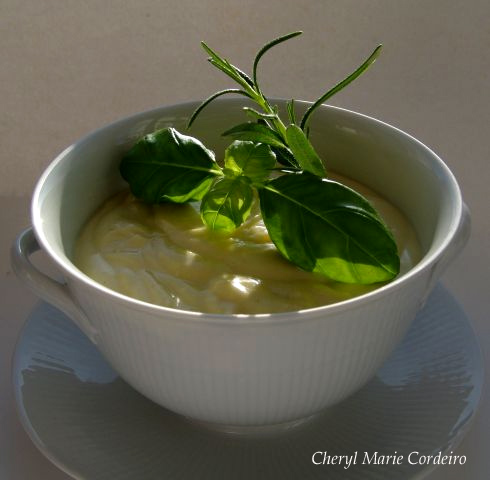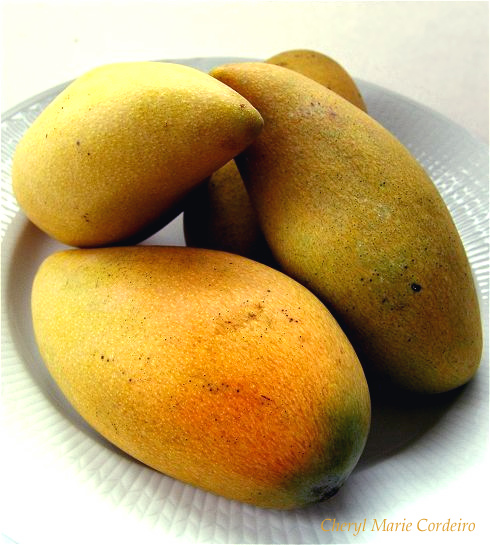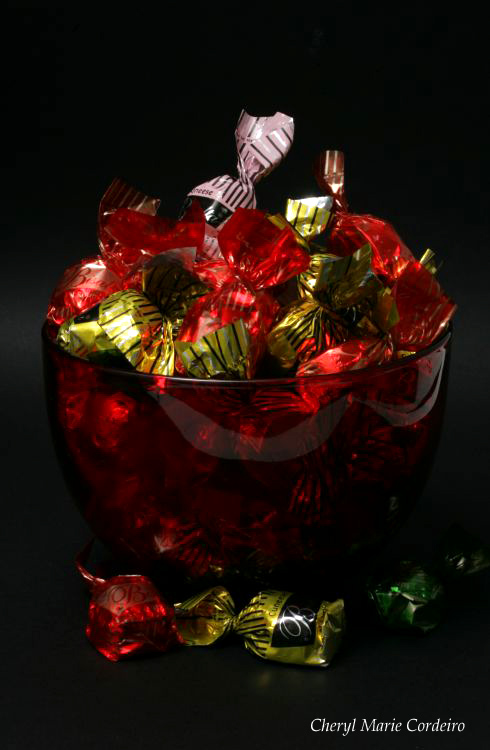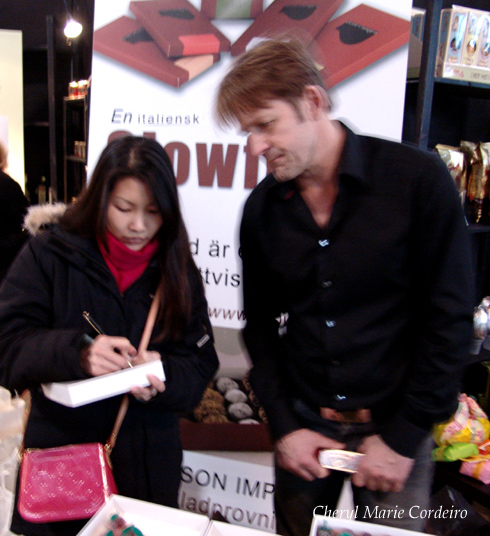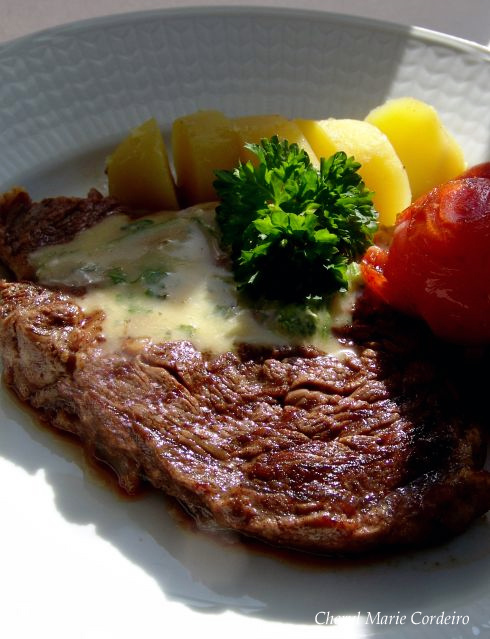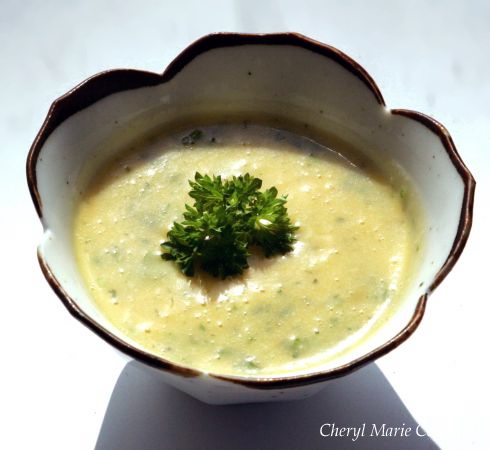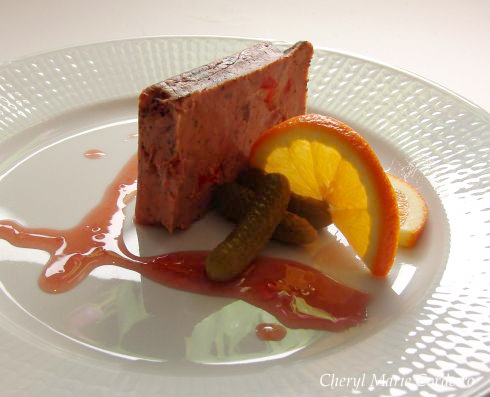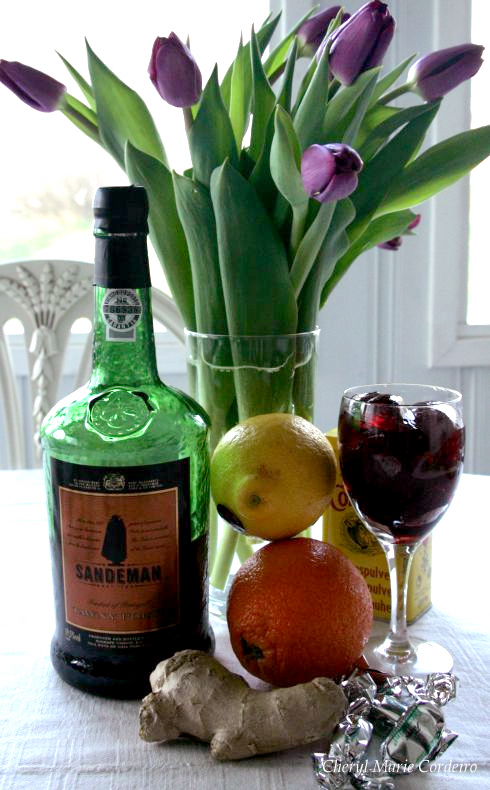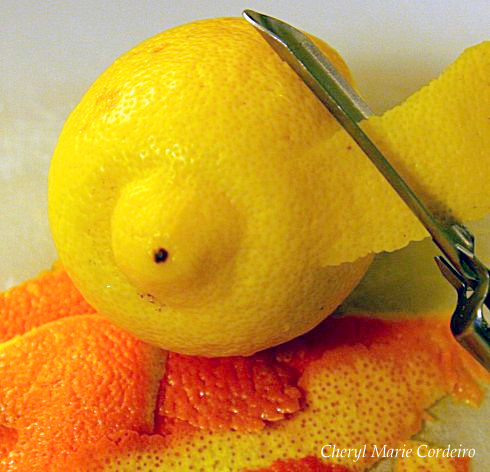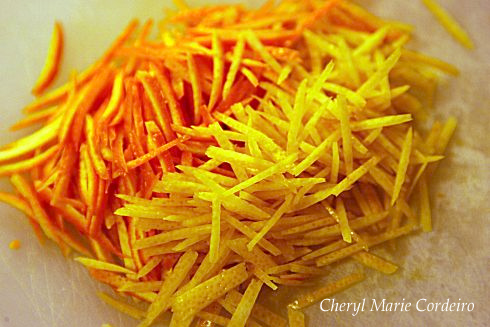
By the road, in nautical, flower picking.
Photo © J E Nilsson for CMC, 2009
It took me years to get over my loathe of horizontally striped clothes, to see them as chic or flattering after a girl friend of mine once commented that a red and white striped t-shirt I had on was the ugliest thing she had ever seen.
It also didn’t help that one of the first fashion basics that we learnt in school was that horizontally striped clothes tended to make the body look broader whilst vertically striped clothes tended to lengthen the body.
But growing up, you often learn to unlearn what others have taught you or have impressed upon you through the years and these days, I don’t think much about wearing horizontal stripes. In fact, I think these nautically themed tops such as this black and white striped jumper from H&M can look effortlessly chic, depending on what you choose to pair it with.
While nautical is all the season’s rage on the runways, from Armani in Italy to Ralph Lauren in the USA in both menswear and womenswear, Gothenburg is a harbour city where come summer, you’ll find more nautically inspired clothing out on the streets as staples than perhaps any other city in Sweden. People often throw over a sailing jacket in white and navy or red and navy, that is both wind and waterproof when out shopping, paired with leather docksides. Here, nautically themed clothes are an indication of the city’s history and heritage as a trading port and home to the Swedish East Indiaman company and its ships some 300 years ago.
While April doesn’t usually allow for bare legs and shorts, Sweden seems to be experiencing a warm spell these weeks, with summer weather already here in the middle of spring. The clear blue skies are encouraging people to take to their hobby in sailing, and a view of several sailing boats at sea is exactly what you’ll find in the archipelago region along the Swedish west coast.
In this post, I’ll be sharing a few different looks with a single striped top.
For something casual (shown in the first picture above), I’ve paired the striped top with a pair of black woollen shorts from Warehouse and a pair of patent leather ballerina shoes from Marc Jacobs, as an alternative to docksides.

By the shadow of a picket fence: Marc Jacobs ballerinas in red patent leather with contrasting pink bows.
Keeping the red patent, pink bowed shoes, the top also works when worn with white shorts for another casual look (pictured below). These white cotton shorts are from Bay Trading from the UK, a company that sell quality items at affordable prices. I like how these shorts tend to look like a mini-skirt from the way it has been cut and sewn.
For something more dressed up, shorts are good to pair with heels, the trend being seen on the runways since 2006 with Luella and Gucci both having their own renditions of shorts with heels.
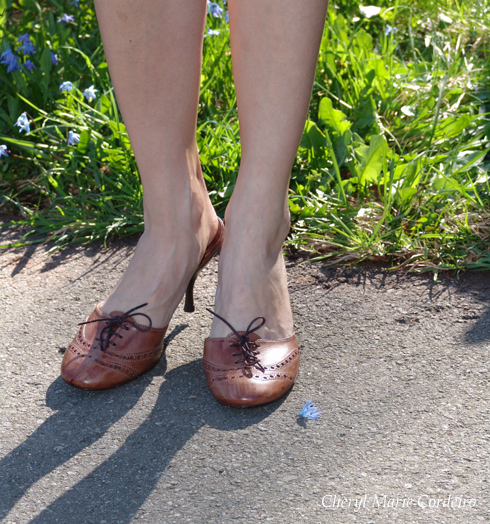
L’Autre Chose brogue mules with tie front detail.
In my own ensemble, I’ve paired the black and white top with white shorts and a pair of L’Autre Chose brogue detailed mules. I find mules, even stilettoed ones, less dressy than courts and quite common a shoe form in more tropical climates, which make them perfect for a smart casual do with shorts. Espadrilles are another favourite of mine to pair with shorts.

Nautical black and white top with white shorts, paired with the L’Autre Chose shoes.
An inspirational multimedia clip from Bill Cunningham, On the Street: a show of legs in Paris (22 March 2009) shows in pictures, how wonderful it is to have legs as a fashion feature, be it in early spring or summer. And I think here, shorts have also gained in popularity as an item to be worn paired with dark leggings and heels; a look that elongates your legs without the use of vertical stripes.
In my ensemble, I’ve paired the black wool shorts with a pair of black patent leather, pointed toe stilettos from Roberto Cavalli. No leggings necessary in this weather, if it keeps up. Cavalli is one of my favourite designers because he never loses sight of what is feminine in a woman, and puts that theme consciously into his designs in women’s clothes, shoes and bags.

Black and white top with black Warehouse shorts and Roberto Cavalli heels.

Roberto Cavalli black patent leather stilettos.
As an indication of the warm weather, here’s a happy bunch of Easter lilies, basking in the warmth of the summer temperatures in spring.
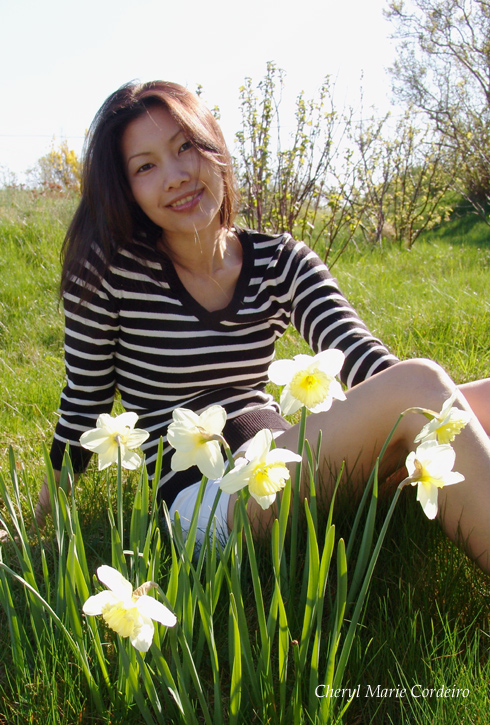
Yellow Easter lilies basking in the early summer warmth.
Enjoy the warm weather upcoming!
